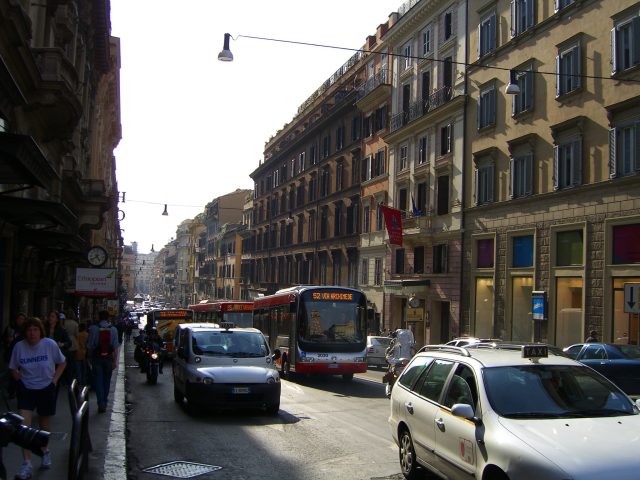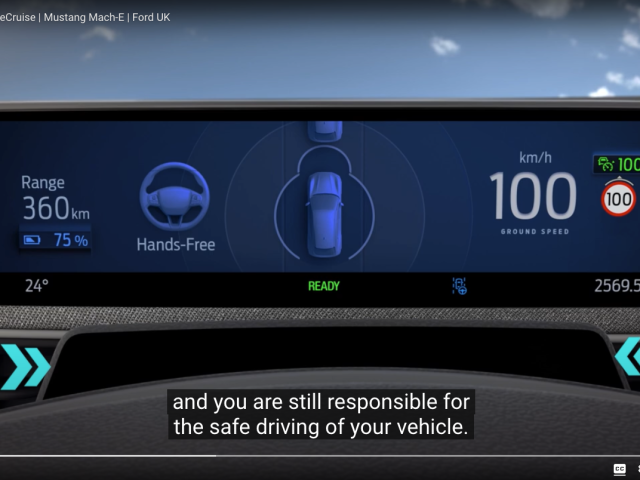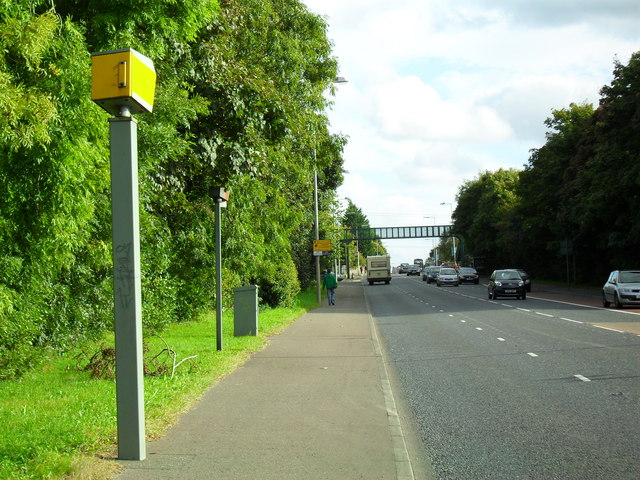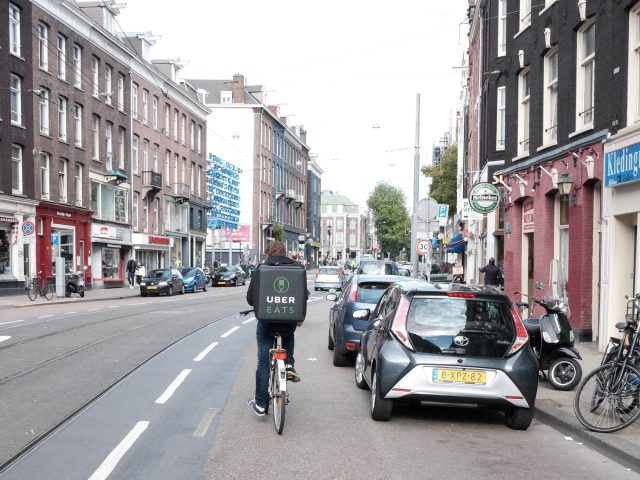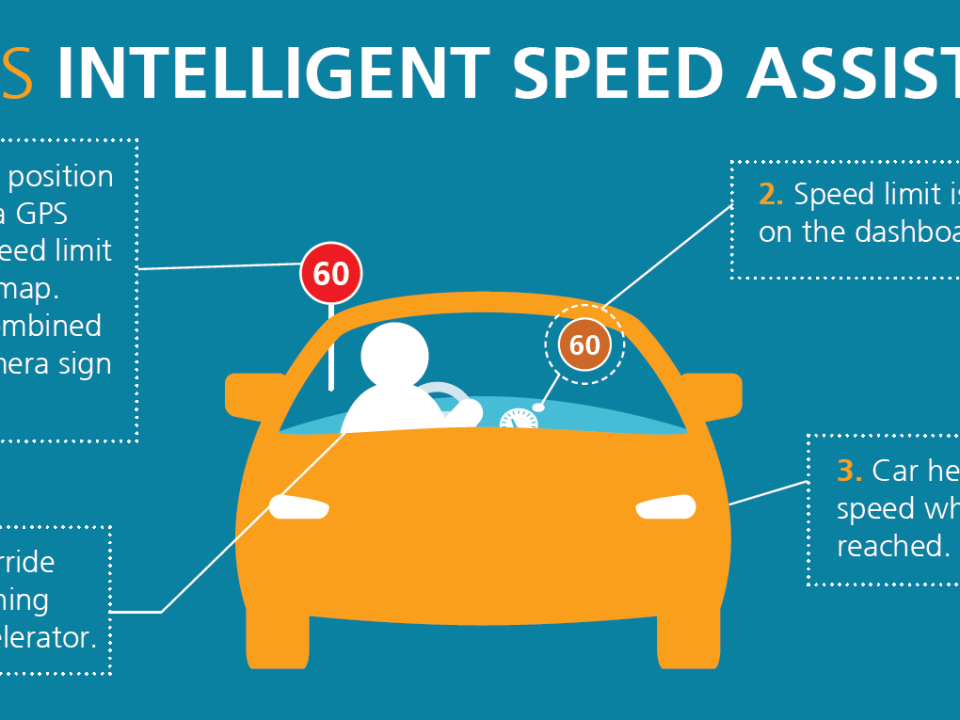
Briefing: Intelligent Speed Assistance (ISA)
On the 17 May 2018 the European Commission proposed a new set of mandatory vehicle safety standards for all vehicles sold in the European Union. Intelligent Speed Assistance is one of the technologies that has been proposed to be fitted on all vehicles. ETSC is calling on the European Parliament, the Council and Member States to support these proposals.
What is Intelligent Speed Assistance (ISA)?
ISA is a vehicle safety technology already available on several models of new car in EU showrooms. ETSC is calling for ISA systems that use a sign-recognition video camera and a GPS-linked speed limit database to help drivers keep to the current speed limit.
Such a system will limit engine power when necessary to help prevent the driver from exceeding the current speed limit. The system can be overridden, or temporarily switched off. As well as improving road safety, reducing emissions and saving fuel, the system can help drivers avoid speeding fines.
What are the main benefits of ISA?
ISA is probably the single most effective new vehicle safety technology currently available in terms of its life-saving potential. A study for the European Commission found the other main positive impacts include: encouraging walking and cycling due to increased perceived safety of cars vis-à-vis vulnerable road users, a traffic calming effect, reductions in insurance costs, higher fuel efficiency and reduced CO2 emissions.[1]
Tackling excessive speed is fundamental to reducing the figure of 26,000 road deaths every year in Europe. With mass adoption and use, ISA is expected to reduce collisions by 30% and deaths by 20%.
Can the system be overridden?
Yes. ETSC recommends fitting ISA systems that can be overridden temporarily.
Example: a driver is carrying out an overtaking manoeuvre to pass a lorry on a motorway at the same time as a decrease in the speed limit is encountered. In this case, the driver could temporarily override the lower speed limit and complete the manoeuvre at a higher speed by depressing the accelerator down hard to signal to the system that the limiter should be temporarily disabled. If the driver continues to drive above the speed limit for several seconds, the system should sound a warning for a few seconds and display a visual warning until the vehicle is operating at or below the speed limit again. Once the vehicle is operating at or below the speed limit, the override state should be cancelled and normal functionality should resume.
ETSC also supports a full on/off switch for the system, to aid public acceptance at introduction. However the system should be on by default and any temporary switched off state should remain only until the vehicle is restarted. Switching off the system should require the user to hold down the button for several seconds to avoid accidental switch off.
For lorries, buses and vans ETSC recommends a slightly different approach. Lorries and buses already have mandatory top speed limiters[2]. These should remain, accompanied by ISA that is overridable at speeds below the top speed limit. ETSC believes that a new top speed limitation of 100km/h should be introduced for vans, also accompanied by overridable ISA for lower speeds.
[promo title=”Infographic” button=”Download” url=”https://etsc.eu/wp-content/uploads/ETSC-ISA-infographic.pdf” icon=”none” target=”” style=”” class=””]How does ISA work, and how could it boost road safety? Download and share our infographic. Also available in French and Spanish. [/promo]Will the vehicle brake when it detects a lower speed limit?
No, the ISA system we recommend does not apply the brakes to reduce speed. When the vehicle encounters a lower speed limit it should display a visual warning to the driver. It is then the driver’s responsibility to brake to reduce the speed appropriately. If the driver does not apply the brakes, the vehicle would in any case slow down naturally to the new speed limit by reducing engine power. This is the equivalent of the driver lifting his or her foot off the accelerator.
The driver may encounter automatic braking while using ISA if an automated emergency braking (AEB) or adaptive cruise control (ACC) system is also in operation on the vehicle.
What happens if the vehicle limits the speed incorrectly?
ISA is a driver assistance technology: the driver, not the car, is responsible for obeying the current speed limit at all times.
Speed-sign recognition technology is improving rapidly. It should be possible to detect the current speed limit at a high level of accuracy including temporary speed limits, digital signs, overhead signs and the like. Similarly, over-the-air updates of speed limit information stored in the car is possible, especially now that all cars have to have the built-in communications technology required for the eCall system. In the limited number of cases where the car limits the speed incorrectly to a lower speed than is actually permitted, the driver would be able to override. Conversely, if the vehicle sets the limit higher than is actually permitted, then the driver would be responsible for ensuring that he or she does not exceed the speed limit.
The car industry is rapidly developing automated driving functionality where the ability of the car to obey the current speed limit will be essential and the carmaker will be responsible for any error. ISA’s rapid adoption will therefore aid development of a robust approach.
Can I already buy a car with ISA fitted?
 Yes, several manufacturers already sell cars in Europe with various implementations of ISA including Ford, Mercedes-Benz, Peugeot/Citroen, Renault and Volvo. The image on the left shows the ISA display on the dashboard of the current generation Ford S-Max.
Yes, several manufacturers already sell cars in Europe with various implementations of ISA including Ford, Mercedes-Benz, Peugeot/Citroen, Renault and Volvo. The image on the left shows the ISA display on the dashboard of the current generation Ford S-Max.
Euro NCAP, the consumer safety rating organisation, gives points[3] for vehicles that include ISA. .
Is ISA an expensive technology?
No. Most of the technology required for ISA is already becoming standard on new cars anyway. All cars will soon have GPS built-in, a requirement of the mandatory eCall emergency calling system in the EU. Many new cars also come fitted with a forward-facing camera, required for technologies such as lane guidance and automated emergency braking. The majority also already have manually set speed limitation functions, so automating this feature is a natural next step. A recent cost assessment for the European Commission found that a camera-based system, shared between several systems such as Automated Emergency Braking (AEB), Lane Keeping Assistance (LKA) and Intelligent Speed Assistance (ISA), would cost in the range of €47–62 per vehicle. The total cost for components (camera, ECU, brackets, trim, wiring) and OEM design and development, tooling costs, etc. was estimated at €186–249, based on individual costs extracted from NHTSA, 2012.[4]
A report for the Commission by consultants TRL has found ISA to be ‘feasible in terms of the technology required’, already available on the market and offering a positive benefit-cost ratio.[5]
Do drivers like ISA?
ISA has been trialled on the road in eleven EU member states and, while drivers take a short time to adjust to the technology, the great majority appreciate it. One obvious benefit, as Ford has pointed out in a recent marketing campaign, is that it helps drivers avoid speeding tickets.[6]
[1] https://publications.europa.eu/en/publication-detail/-/publication/77990533-9144-11e7-b92d-01aa75ed71a1#
[2] Top speed limiters for lorries and busses come under existing EU legislation: 2004/11/EEC http://eur-lex.europa.eu/legal-content/EN/TXT/?uri=CELEX%3A32004L0011
[3] https://www.euroncap.com/en/vehicle-safety/the-ratings-explained/safety-assist/speed-assistance/
[4] https://publications.europa.eu/en/publication-detail/-/publication/77990533-9144-11e7-b92d-01aa75ed71a1
[5] https://publications.europa.eu/en/publication-detail/-/publication/47beb77e-b33e-44c8-b5ed-505acd6e76c0
[6] http://social.ford.co.uk/could-this-spell-the-end-for-speeding-tickets/
Download (PDF)
